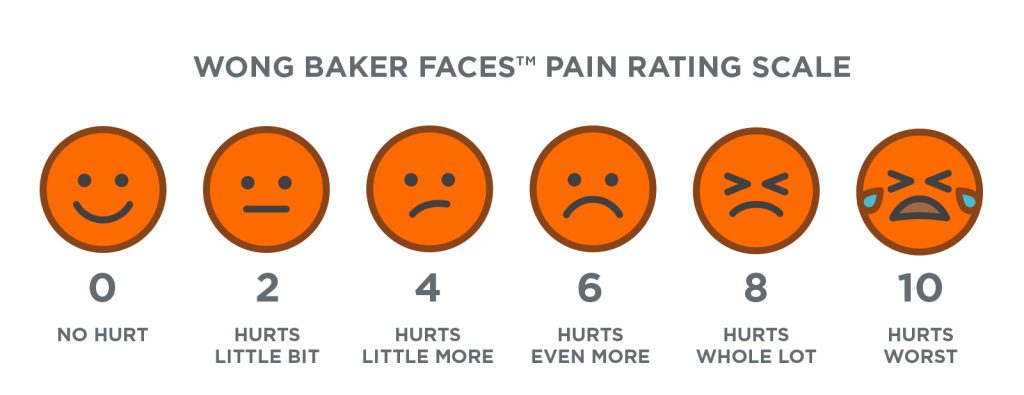What’s Your Pain Level for Providing Palliative Care? Discover 3 Steps for Relief.
At the recent Interdisciplinary Conference hosted by National Hospice and Palliative Care Organization in Orlando, palliative care was among the hot topics generating a lot of discussion.
Not long ago, most providers of palliative care our company works with classified the service as a “loss leader.” Due to the weak reimbursement stream from CMS, many providers accepted they would lose money providing home-based palliative care.
Conventional thinking was that palliative care would not only provide vital services at earlier stages of illness, it would help form relationships with patients and families sooner. With the trust gained by those relationships, providers could theoretically convert patients to hospice care as early as appropriate – and the longer LOS for hospice reimbursement would help recoup the “loss” of providing palliative care.
That strategy didn’t work out for many as well as they hoped. One lingering obstacle is that a lot of people – including physicians and other professional referrers – still don’t truly understand how palliative care differs from hospice care. In focus groups with physicians conducted by Center to Advance Palliative Care, the doctors admitted they viewed palliative care as “comfort care for the end of life.” Thus, referrals to palliative care weren’t happening as early as they should, if they happened at all.
Another barrier is fear of the “H word.” Patients and/or their families often won’t accept that it’s time for hospice care, or the patient wants to pursue every available curative treatment, regardless of diminishing effectiveness. So the patient may embrace palliative care – and end up dying while on the service instead of ever converting to the increased benefits of hospice care.
Yet palliative care, once it’s understood and applied properly, will play a major role in the value-based delivery model. Meanwhile, how do you continue to provide and improve your palliative care program without losing your shirt?
Our clients who have been the most successful have established contracts for their palliative services with other healthcare providers (mainly health systems and SNFs) and with payers outside of CMS.

The key to securing these contracts is to prove the effectiveness and cost efficiency of your palliative services through meaningful data. Here are 3 steps to assist you in collecting and promoting data to attract the interests of partners who will pay you for excellent palliative care:
- Develop a QAPI plan for your palliative care program – or an important aspect of it.
Have you ever created a Quality Assurance and Performance Improvement plan specifically for your palliative care program? Most providers who offer both hospice and palliative services have focused their QAPI plans on hospice care. But why not apply the same principles to your palliative care program, or an aspect of it that demonstrates great value and impact?
For instance, you could put a QAPI plan in place to document best practices and outcomes for managing your patients’ pain. What if your plan included starting every patient encounter with a pain assessment using the Wong-Baker scale or another tool? What if you could document that you decrease patients’ pain by a significant average?
HCAHPS scores for hospitals and CAHPS scores for hospices both include ratings for pain management. Sadly, “help for pain and symptoms” is among the nation’s lowest average scores for Hospice Compare ratings. What if your palliative care program established proven effectiveness in this vital area so you could apply the approach to help health systems and your own hospice program improve in relieving pain and other symptoms?
- Curate data that quantifies the effectiveness and value of your palliative care program.
You’re likely already collecting data related to your palliative care program. How are you applying that data to shape meaningful messages to your various audiences?
Your data should quantify your stories in two main areas – patient outcomes and financial impact. Sticking with the QAPI plan for pain assessment example above, imagine being able to share quantified patient outcomes for reduced pain and tying it to other results such as reduced ER visits, lower hospital readmissions, and keeping residents in-house at skilled nursing centers. The financial impact of these results – both from a cost savings and penalty avoidance standpoint – can be compelling.
- Package and promote your data to gain contracts outside of CMS.
Each of your audiences – different referral sources and payers – will be interested in different aspects of your data-proven performance. Strong potential partners may even collaborate with you to structure your data into areas where they are looking to improve in patient outcomes and/or financial impact.
Once you prove the value of your palliative care program, partners may be very willing to establish contracts with you and make the use of your palliative care part of their own best practices. With the continued emergence of Medicare Advantage and groups such as ACOs, collaborators are actively seeking preferred providers who can deliver the best care at the lowest cost.
Keep in mind that many organizations – even prominent hospitals – may not have physicians who are board-certified in Hospice & Palliative Medicine (HPM). This specialty is among the newest recognized by the American Medical Association, being established relatively recently in 2006. And there’s a growing shortage of specialists in this field as Baby Boomers age and create growing demand.
If your agency has physicians or other staff members certified in palliative care, you have a tremendous asset. Because of the weak palliative care reimbursement from CMS, hospitals and health systems often don’t hire HPM specialists – and may contract with you to provide palliative services for both inpatient and transitional care after discharge.
Do you need help in creating strategies and messaging that promote the impact of your palliative care program? Transcend Strategy Group would love to discuss the possibilities with you. Contact us to begin the conversation.










